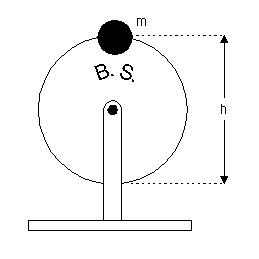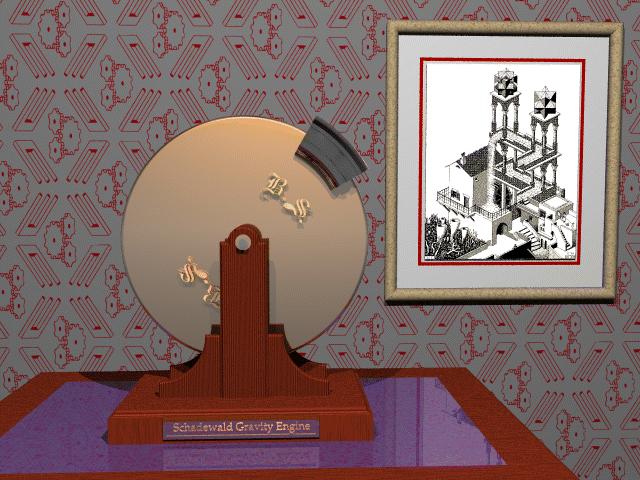Reprinted from Science Digest, April 1978
Gravity! The same mysterious force that keeps our feet on the ground and holds the planets in their orbits was first harnessed centuries ago. The crude wooden water wheels that the Romans built at natural waterfalls have given way to precision turbines at giant man-made dams, but the principle is unchanged. Using water as a conductor, energy is produced from the force of gravity.
Falling water is scarce in many regions of the world. This shortage has led a few visionaries to experiment with engines designed to derive energy directly from gravity, without depending on water or some other intermediary. Many selfless individuals have devoted their lives and fortunes to this dream, only to be derided as cranks. It’s true that their so-called “perpetual motion machines” often were complicated contraptions and didn’t work very well. Also, many were theoretically unsound.
Because of the past failures in the field of gravitational power, government energy “experts” have written it off, ignored it. While they have poured billions into boondoggle schemes for extracting power from ocean waves, tides, geothermal hot spots and manure, they have lacked the vision to see the potential of gravity.
“If I have seen farther that other men, it is because I’ve stood on the shoulders of giants,” said Isaac Newton. He was referring to men like Descartes and Galileo, who laid the foundations for his theories. Scientific breakthroughs, strokes of genius though they may be, always rest on foundations laid by others.
In recent years, gravitational theorists have completed the groundwork necessary for me to make a major breakthrough.
Many distinguished scientists now believe that the so-called Universal Gravitation Constant is not a constant at all, but is in fact constantly decreasing. This crucial discovery means that the acceleration of gravity on earth is constantly decreasing, also. Incredibly, no one seems to have recognized the importance of this concept for gravity engines.
 My perfected gravity engine
(shown in the diagram) is so simple that you need not be
a scientist to understand its operation. A heavy weight of mass m is attached to
the periphery of a balanced wheel, and the wheel is started rotating with the weight at the top.
As the wheel turns, the weight descends through a distance h, and potential
energy equal to mgh is converted to kinetic energy,
where g is the average acceleration of gravity during the descent. As
rotation continues, the weight again rises to the top, and
mg'h kinetic energy is changed to potential energy. As
the acceleration of gravity has decreased in the interim, g' is less
than g, and there is a net gain in kinetic energy. With
every revolution, the wheel speeds up.
My perfected gravity engine
(shown in the diagram) is so simple that you need not be
a scientist to understand its operation. A heavy weight of mass m is attached to
the periphery of a balanced wheel, and the wheel is started rotating with the weight at the top.
As the wheel turns, the weight descends through a distance h, and potential
energy equal to mgh is converted to kinetic energy,
where g is the average acceleration of gravity during the descent. As
rotation continues, the weight again rises to the top, and
mg'h kinetic energy is changed to potential energy. As
the acceleration of gravity has decreased in the interim, g' is less
than g, and there is a net gain in kinetic energy. With
every revolution, the wheel speeds up.
The secret of efficiently extracting energy from gravity is to keep the wheel spinning at a constant speed and siphon off only the excess energy gained on each revolution. The obvious way to accomplish this is to couple the wheel directly to a generator. The excess energy, converted to electricity, then can be fed directly into the existing power grid.
No doubt the greatest merit of the Schadewald Gravity Engine is its simplicity -- it has exactly one moving part. Furthermore, it will run equally well in either direction. These qualities make it especially suitable for use in underdeveloped countries which, incidentally, have been hardest hit by the energy crunch.
The inventor has received absolutely no help -- not even encouragement -- from any agency, public or private, in developing this boon. He knows that the oil companies, coal companies, the nuclear power industry, and all those holding fat grants for the development of solar power, wind power, and garbage power will band together and try to suppress the invention. Perhaps they will try to have the inventor put away again. Ultimately, the connivers will fail. Though they may destroy the inventor, the invention will live!
It will live to profoundly alter the landscape of the future. Soon you will see row after row of Schadewald Gravity Engines, endlessly producing pollution-free power; hillsides covered with them; mountains, valleys, deserts, even vacant lots, all filled with gravity engines tirelessly pumping out electricity for the benefit of mankind.
That’s right; for mankind’s benefit, not mine. I admit that, at first, I had visions of grasping the enormous wealth and power at my fingertips, but I prefer to be remembered for my magnanimity rather than my greed.
Therefore, as of April 1st, 1978, I yield my invention to the public domain, that it may solve the energy crisis and bring peace and prosperity to the world. I ask only that my initials be inscribed on the wheel of every engine, so that my genius may get the sort of recognition it deserves.
We found in Bob's archives this photo he made some years ago of the Schadewald Gravity engine model on display in the Museum of Unworkable Devices. The wheel shows a slight blur due to the motion of the wheel. The background of the display area has a wallpaper design including the Penrose impossible tribar and Donald Simanek's impossibly meshing gears. The artwork on the wall is Maurice Escher's Waterfall an example of the achievement of the impossible through the deceptions of art.

Picture © 1992 by Bob Schadewald.
Check Bob's 3d page for his stereo picture of the gravity engine.
Can you explain the deception Bob used in the above satire? This machine would not work even under ideal conditions: no friction, no air drag, and even given that the assumption of a decrease of the universal gravitational constant is actually true (which hasn't been confirmed). This puzzle can be answered without appeal to the laws of thermodynamics; only elementary principles of freshman physics will suffice. For more about this see The Museum of Unworkable Devices. Select "Bob Schadewald's Gravity Engine". Don't peek at the answer too soon.
Return to Donald Simanek's home page.